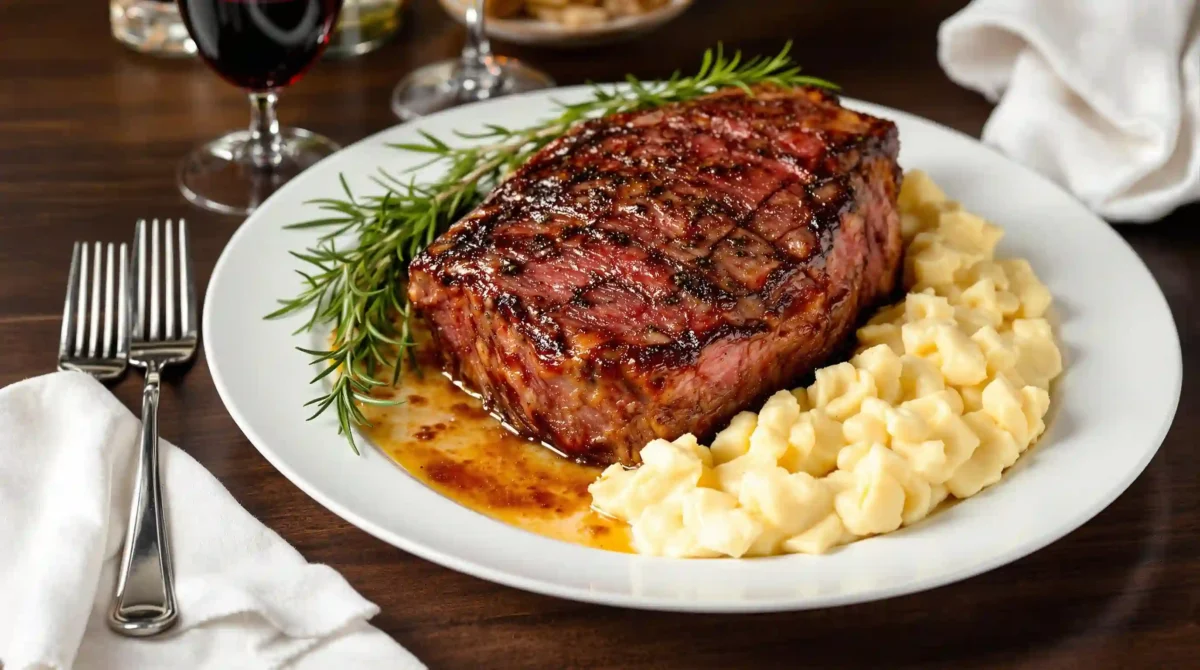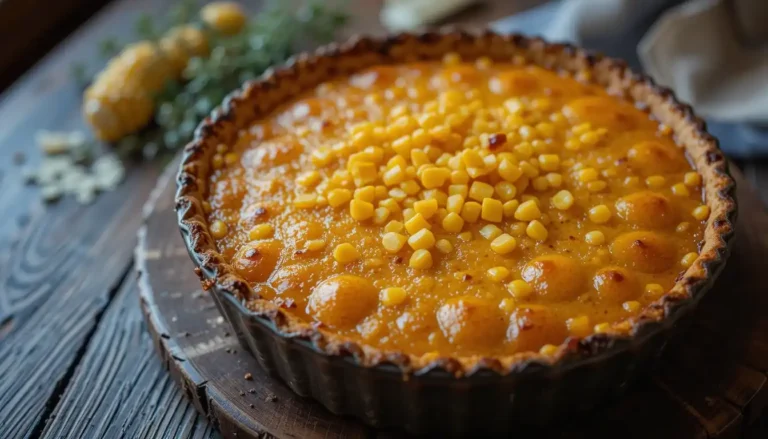The Ultimate Beef Rib Eye Roast Recipe: Tender, Juicy, and Flavorful
Are you ready to impress your family and friends with a mouthwatering beef rib eye roast? This succulent cut of meat is perfect for special occasions, holiday dinners, or any time you want to elevate your culinary game. In this comprehensive guide, we’ll walk you through everything you need to know about preparing a delicious beef rib eye roast, from selecting the right cut to serving it perfectly. Let’s dive in!
- What is a Beef Rib Eye Roast?
- Ingredients for Beef Rib Eye Roast
- Step-by-Step Instructions
- Cooking Tips for the Perfect Beef Rib Eye Roast
- Nutritional Information
- Storage Advice
- Variations of Beef Rib Eye Roast
- Complementary Dishes and Beverage Pairings
- Conclusion
- Frequently Asked Questions (FAQ) About Beef Rib Eye Roast
- 1. What is the best way to choose a beef rib eye roast?
- 2. How long should I cook a beef rib eye roast?
- 3. What is the ideal internal temperature for a beef rib eye roast?
- 4. Should I sear the roast before cooking it?
- 5. Can I cook a beef rib eye roast in a slow cooker?
- 6. How do I store leftover beef rib eye roast?
- 7. What can I serve with beef rib eye roast?
- 8. Can I use a different cut of beef for this recipe?
- 9. How do I slice a beef rib eye roast?
- 10. What is the difference between a rib eye roast and prime rib?
- 11. Can I marinate a beef rib eye roast?
- 12. What should I do if my roast is cooking too quickly?
- 13. How can I make my beef rib eye roast more flavorful?
- 14. Is it necessary to let the roast rest after cooking?
- 15. Can I use a meat thermometer to check for doneness?
What is a Beef Rib Eye Roast?
The beef rib eye roast, also known as a ribeye roast or prime rib, is a cut of beef that comes from the rib section of the cow. It is renowned for its rich marbling, which contributes to its tenderness and flavor. This roast is often served during festive occasions and is a favorite among meat lovers for its juicy texture and robust taste.
Ingredients for Beef Rib Eye Roast
To prepare a delicious beef rib eye roast, you will need the following ingredients:
For the Roast:
- 1 (4-6 pound) beef rib eye roast (bone-in or boneless)
- 2 tablespoons olive oil
- 4 cloves garlic, minced
- 2 tablespoons fresh rosemary, chopped (or 1 tablespoon dried)
- 2 tablespoons fresh thyme, chopped (or 1 tablespoon dried)
- Salt and pepper, to taste
For the Optional Gravy:
- 2 cups beef broth
- 1 tablespoon cornstarch (optional, for thickening)
- 1 tablespoon Worcestershire sauce
- Salt and pepper, to taste
Step-by-Step Instructions
Step 1: Prepare the Roast
- Remove the Roast from the Fridge: Take the beef rib eye roast out of the refrigerator and let it sit at room temperature for about 1 hour. This helps it cook more evenly.
- Preheat the Oven: Preheat your oven to 450°F (232°C).
- Season the Roast: In a small bowl, mix the olive oil, minced garlic, rosemary, thyme, salt, and pepper. Rub this mixture all over the roast, ensuring it is evenly coated.
Step 2: Roast the Beef
- Place the Roast in a Roasting Pan: Position the beef rib eye roast in a roasting pan, bone side down if using a bone-in roast.
- Initial High-Temperature Roast: Roast the beef in the preheated oven for 20 minutes. This high temperature will help create a beautiful crust.
- Lower the Temperature: After 20 minutes, reduce the oven temperature to 325°F (163°C) and continue roasting. Use a meat thermometer to check the internal temperature:
- Rare: 125°F (52°C)
- Medium Rare: 135°F (57°C)
- Medium: 145°F (63°C)
- Medium Well: 150°F (66°C)
- Well Done: 160°F (71°C)
- Rest the Roast: Once the desired temperature is reached, remove the roast from the oven and cover it loosely with aluminum foil. Let it rest for at least 20 minutes before slicing. This allows the juices to redistribute, ensuring a juicy roast.
Step 3: Make the Gravy (Optional)
- Prepare the Gravy: While the roast is resting, you can make a simple gravy. Pour the drippings from the roasting pan into a saucepan. Add beef broth and Worcestershire sauce, and bring to a simmer. If you prefer a thicker gravy, mix cornstarch with a little water and stir it into the simmering broth until thickened. Season with salt and pepper to taste.

Cooking Tips for the Perfect Beef Rib Eye Roast
- Choose Quality Meat: Look for a well-marbled rib eye roast for the best flavor and tenderness. USDA Prime or Choice grades are ideal.
- Use a Meat Thermometer: This is essential for achieving the perfect doneness. Invest in a good quality instant-read thermometer for accuracy.
- Let It Rest: Never skip the resting step! It’s crucial for a juicy roast.
- Slicing: Use a sharp carving knife to slice the roast against the grain for maximum tenderness.
Nutritional Information
Here’s a general breakdown of the nutritional information for a 3-ounce serving of beef rib eye roast (without gravy):
- Calories: 250
- Protein: 22g
- Fat: 18g
- Saturated Fat: 7g
- Cholesterol: 70mg
- Sodium: 60mg
Note: Nutritional values may vary based on the specific cut and preparation methods.
Storage Advice
- Refrigeration: Store leftover beef rib eye roast in an airtight container in the refrigerator for up to 3-4 days.
- Freezing: You can freeze the roast for up to 3 months. Wrap it tightly in plastic wrap and then in aluminum foil to prevent freezer burn.
Variations of Beef Rib Eye Roast
- Herb-Crusted Roast: Add different herbs like sage or parsley to the seasoning mix for a unique flavor.
- Spicy Rub: Incorporate spices like paprika, cayenne pepper, or chili powder for a kick.
- Marinated Roast: Marinate the roast overnight in a mixture of soy sauce, garlic, and ginger for an Asian-inspired twist.
Complementary Dishes and Beverage Pairings
Side Dishes:
- Roasted Vegetables: Carrots, potatoes, and Brussels sprouts make excellent sides.
- Creamy Mashed Potatoes: A classic pairing that complements the richness of the roast.
- Caesar Salad: A fresh salad balances the hearty flavors of the beef.
Beverage Pairings:

- Red Wine: A full-bodied red wine like Cabernet Sauvignon or Merlot pairs beautifully with beef.
- Craft Beer: A rich stout or porter can enhance the flavors of the roast.
Conclusion
Now that you have all the tips and tricks for preparing a perfect beef rib eye roast, it’s time to gather your ingredients and get cooking! This roast is sure to be a showstopper at your next gathering. Don’t forget to share your results and any variations you try in the comments below. Happy cooking!
Frequently Asked Questions (FAQ) About Beef Rib Eye Roast
1. What is the best way to choose a beef rib eye roast?
When selecting a beef rib eye roast, look for a cut with good marbling (the white streaks of fat within the meat). This marbling contributes to the roast’s flavor and tenderness. USDA Prime or Choice grades are ideal for the best quality.
2. How long should I cook a beef rib eye roast?
The cooking time for a beef rib eye roast varies based on its weight and desired doneness. As a general rule, roast it for about 15-20 minutes per pound at 325°F (163°C) after the initial high-temperature sear. Always use a meat thermometer to check for doneness.
3. What is the ideal internal temperature for a beef rib eye roast?
Here are the recommended internal temperatures for different levels of doneness:
- Rare: 125°F (52°C)
- Medium Rare: 135°F (57°C)
- Medium: 145°F (63°C)
- Medium Well: 150°F (66°C)
- Well Done: 160°F (71°C)
4. Should I sear the roast before cooking it?
Yes! Searing the beef rib eye roast at a high temperature for the first 20 minutes helps to create a flavorful crust. After that, reduce the temperature to finish cooking the roast evenly.
5. Can I cook a beef rib eye roast in a slow cooker?
Yes, you can cook a beef rib eye roast in a slow cooker. Season the roast and sear it first, then place it in the slow cooker with some broth or wine. Cook on low for 6-8 hours or until tender.
6. How do I store leftover beef rib eye roast?
Store leftover beef rib eye roast in an airtight container in the refrigerator for up to 3-4 days. For longer storage, wrap it tightly in plastic wrap and aluminum foil and freeze it for up to 3 months.
7. What can I serve with beef rib eye roast?
Beef rib eye roast pairs well with a variety of side dishes, including roasted vegetables, creamy mashed potatoes, and fresh salads. For beverages, consider serving a full-bodied red wine or a rich craft beer.
8. Can I use a different cut of beef for this recipe?
While the rib eye roast is ideal for its flavor and tenderness, you can use other cuts like a sirloin roast or tenderloin. Keep in mind that cooking times and methods may vary based on the cut.
9. How do I slice a beef rib eye roast?
To slice the roast, use a sharp carving knife and cut against the grain. This will help ensure that each slice is tender and easy to chew.
10. What is the difference between a rib eye roast and prime rib?
The terms “rib eye roast” and “prime rib” are often used interchangeably, but there is a distinction. Prime rib refers to a specific cut that is graded as USDA Prime, while rib eye can refer to any rib eye cut, regardless of grade. Prime rib is typically bone-in and includes the rib bones, while rib eye can be boneless.
11. Can I marinate a beef rib eye roast?
Yes, marinating a beef rib eye roast can enhance its flavor. Consider using a marinade with acidic ingredients like vinegar or citrus juice, along with herbs and spices. Marinate for at least a few hours or overnight for the best results.
12. What should I do if my roast is cooking too quickly?
If your beef rib eye roast is cooking too quickly, you can lower the oven temperature to slow down the cooking process. Additionally, you can cover the roast loosely with aluminum foil to prevent it from browning too much on the outside while it finishes cooking.
13. How can I make my beef rib eye roast more flavorful?
To enhance the flavor of your beef rib eye roast, consider using a dry rub with spices, herbs, and garlic. You can also add aromatics like onions and carrots to the roasting pan to infuse additional flavor into the meat.
14. Is it necessary to let the roast rest after cooking?
Yes, letting the roast rest for at least 20 minutes after cooking is crucial. This allows the juices to redistribute throughout the meat, resulting in a juicier and more flavorful roast.
15. Can I use a meat thermometer to check for doneness?
Absolutely! A meat thermometer is the best way to ensure your beef rib eye roast is cooked to your desired level of doneness. Insert the thermometer into the thickest part of the roast, avoiding any bones.







